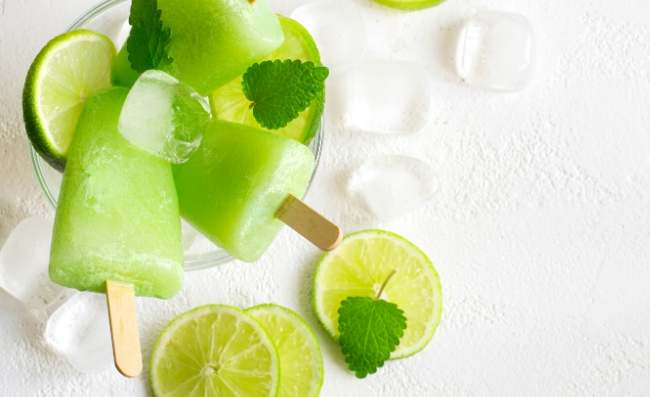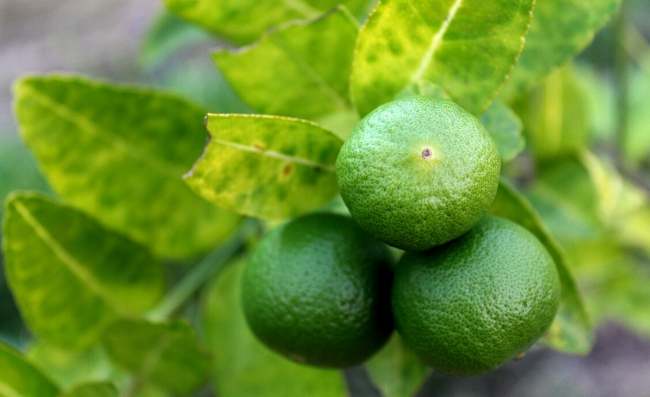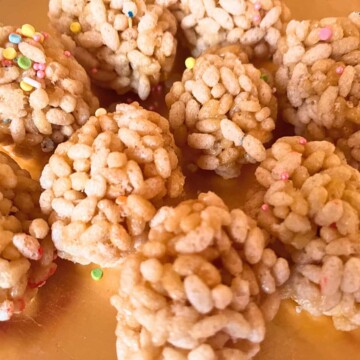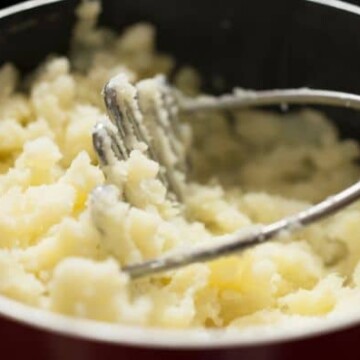Lime has so many uses. The lime juice and lime zest are ingredients in many different recipes.
I’m pretty sure you have come across recipes that require you to use lime juice. I have come across so many. However, I never used to be sure of how much juice is in one lime.
Usually, one medium-sized lime contains approximately 2 tablespoons of lime juice. This is about 29 milliliters of juice. You need to juice the lime properly so that you get all the juice inside it.

Limes are round, green, citrus fruits that are very high in Vitamin C. They are usually very sour.
Limes are also packed with nutrients that are essential for the human body. When consumed, they have numerous health benefits.
If you come across a recipe that requires you to use lime juice, you first have to purchase the limes.
There are several different kinds of lime. Some contain more juice than others. So how exactly do you know which limes are the best for juicing? Here is how to choose the best limes for juicing.
Does Lime Juice Go Bad? Click to Read.
Choosing lime for juicing

When purchasing lime, the goal is to choose the ones that will produce the most juice. I have had some experience with limes and I have noted a few tips on how to purchase the best limes.
- The heavier, the better
For some reason, limes that are heavy contain the most juice. While purchasing, compare the weight and buy the one that feels a bit heavy for its size.
It is definitely juicier than the lighter one.
- Avoid limes that have bumpy skin and nipples
Limes that have a lot of juice usually have a smooth, firm skin. The skin of the lime should not be bumpy. The lime should also not have a nipple at the end like a lemon normally does.
Limes that have nipples produce less juice compared to those that don’t have nipples. There is no scientific explanation for this, I just noted it from my experience with limes.

- Firm limes have more juice
Unlike other fruits, limes that are soft have less juice compared to those that feel firm. Firm limes are packed with lime juice. Always buy limes that are firm and have shiny skin.
- The greener, the better
Limes are usually dark green in color and turn yellow as they ripen. With other fruits, the riper the fruit is, the more juice it has.
However, this is not the case for limes. Limes that are bright green in color have more juice compared to the yellow ones and the dark green ones. Always buy lemons that are bright green in color.
- Choose the limes that yield to pressure a little.
Despite the fact that firm limes have more juice, the lime should yield to pressure a bit when you squeeze it with your thumb.
If it does not yield to pressure you might not get enough juice from it. On the other hand, it the lime feels too soft it is definitely not packed with juice.
Click to check out these tips
How much juice is in one lime?

When you properly squeeze the juice out of a medium sized lime using the method below, these are the results.
Each half lime produces one tablespoon of lime juice. One, full, medium-sized lime will produce approximately two tablespoons of lime juice. Two tablespoons of juice are equivalent to 29 milliliters of juice.
Now that you know exactly how much lime juice is in one lime, you will have an easier time when using recipes that require you to add fresh lime juice.
If a recipe requires that you add one tablespoon of fresh lime juice, just juice half a lime. If it requires 4 tablespoons of fresh lime juice, use two medium-sized limes for the juice.
Always use a handheld juicer to get the juice out of your lime. If you use your hands, a lot of juice may go to waste.

If you juice limes or any other citrus fruits regularly, consider buying a manual juicer. It makes work easier and you won’t use too much energy.
It also works faster compared to the handheld juicer. Alternatively, you can use an electric juicer to get the most juice out of the limes.
I use a handheld juicer because I find it very convenient. Besides, it is not as expensive as the manual juicer or electric juicer.
Getting the most juice out of limes

Now that you know which limes to purchase, you need to learn how to properly juice them so that no juice goes to waste.
I realized that I was throwing out limes that still had a lot of juice in them because I was not juicing them properly.
Learning how to juice lime is an essential skill. Here is how to properly juice your limes.
Items needed
- Bowl
- Sharp knife
- Juicer (handheld)
- Fine strainer
Instructions
- Before juicing the lime, place it in a microwave-safe dish and put them inside the microwave. Turn on the microwave and let it heat it for 10 seconds. The heat will break down the membranes that hold the juice.
- Let the lime cool down and then use your palm to roll it on the kitchen counter top. Massaging the lime this way will soften it and it will consequently produce more juice.
- Use a sharp knife to cut the lime into half. Cut it crosswise so that you get more juice from it.
- Place the lime in the hand held juicer. The side that has no skin should face downwards. Squeeze the two handles of the juicer together so that the lime juice is squeezed into the bowl. Repeat the same process for the other half of the lime.
- Once you have squeezed all the juice out of the lime, use a fine strainer to separate the lime seeds from the lime juice. When done, pour the lime juice into a measuring spoon.
Click Here to check out: What to Make in a Blender [And Why you Need One]
How to cut lime so that you get all the juice in it

Most people cut lime the wrong way. That is why when you try to squeeze the juice out of it, it is too firm and you can barely get any juice from it. You won’t even be able to squeeze it all the way. Always cut the lime crosswise. This way, you’ll get more juice because the lime won’t be too firm.
Alternatively, cut the lime in half and then use a fork to squeeze out the juice from the lime. Don’t use a knife because you may end up slicing your wrist.
You will get a lot of juice from using this method but not as much as when you use a handheld juicer or lime press.
I highly recommend using the handheld juicer or lime press to get the most juice out of the limes.
Storing limes

The best place to store lime juice is inside the refrigerator. You may leave them on the kitchen counter for 2-3 days.
If you leave them out for longer, the juice content in them will reduce as they ripen. Simply place the limes inside the refrigerator.
There is no need to place them in bags because they have oily skin. However, if you have already sliced the lime, place it inside a bag before refrigerating and make sure you use it within a day or two.
Otherwise, the lime will lose its flavor completely.
Benefits of lime

Limes are packed with nutrients. They have several health benefits. Here are some of the health benefits of lime.
- Boosts immunity
Limes are packed with Vitamin C which promotes the body’s production of white blood cells. White blood cells help the body to fight off diseases and infections. Vitamin C also enables the body to produce collagen that makes wounds heal faster.
- Reduces the risk of contracting heart disease
Lime juice plays a role in lowering the body’s blood pressure which is one of the main causes of heart disease. The vitamin C in lime juice also prevents the blockage of arteries.
- Antioxidant
Lime juice is a good source of antioxidants. The antioxidants help the body fight against diseases like diabetes and cancer.
- Prevents the skin from aging
The antioxidants in lime promote healthy skin by reducing wrinkles and preventing premature aging of the skin. People that drink lime juice always have healthy skin.
- Prevents kidney stones
Limes contain citric acid which prevents the formation of mineral crystals in the urine i.e. kidney stones that are very painful to pass. If you take lime juice, you are saving yourself from the painful experience of passing kidney stones.
Side effects of lime juice

Some people are naturally allergic to lime. If you take lime juice despite being allergic, it may make you have difficulty in breathing. If this happens, seek medical attention immediately.
Lime contains a lot of citric acids and may sometimes cause nausea and heartburn. Use or consume lime juice in moderation.
Applying lime to your skin may make it more sensitive, so do it in moderation.




